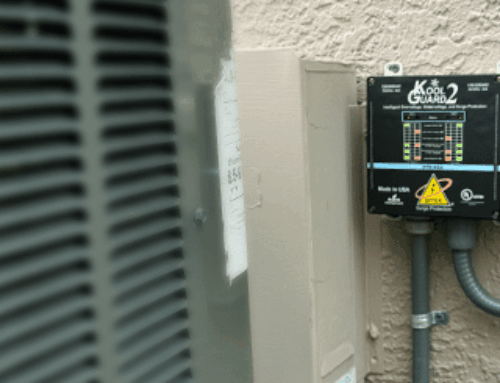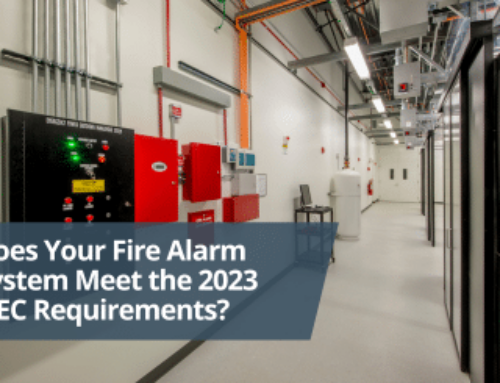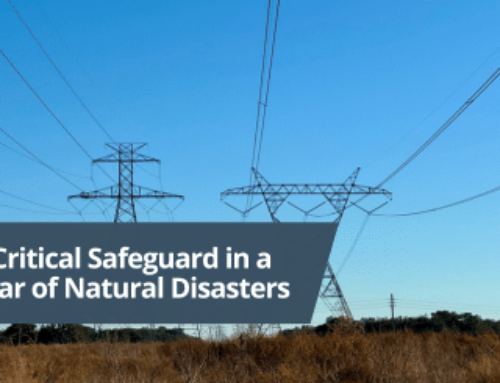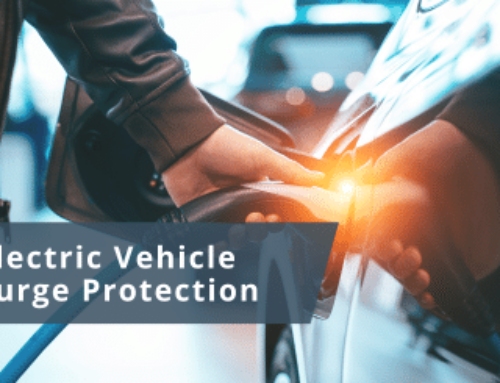The following article was originally published in the HVAC Tactical magazine, spring 2024 issue. Clear here to read the original.
Protection for Homes, Health, Customers, & Your Bottom Line
Think about the most valuable items in our homes. What’s the first thing that comes to mind? Did you envision your TV, appliances, computer, or other electronics? We all use these items every day, and most people take steps to protect them because who wants to be without a TV, or a refrigerator, or a laptop? Insurance is one way to protect your assets. But there’s another option you should consider as well: surge protective devices (SPDs).
Surge protective devices safeguard appliances and electronics from power surges and spikes by limiting voltage surges that occur in the normal electrical system as power is supplied to a home or business. This is accomplished by diverting surge current and limiting any unwanted voltages to a level that will not damage the protected equipment. Research shows SPDs prolong the life of electronics and appliances as even small surges, which occur daily, can eventually cause extensive damage.
Let’s go back to that list of most valuable items in a home—did your HVAC system make the cut? It should, and if you work in the industry, you know that. An HVAC system is far more than just a simple “system.” It’s a complete home (and business) comfort solution that provides improved indoor airflow and quality. It also directly impacts the health of anyone living or working within the property. An HVAC system is vital to prevent the development of excessive moisture that can lead to the growth of toxic mold in a home or building. HVACs are no longer an aspirational household luxury; they are a necessity that few want to be without.
Consider the costs of replacing a TV or microwave. Now calculate the cost of replacing an HVAC system. Did dollar signs just float through your head? Could you envision the quote being provided to a homeowner? With the replacement of the equipment as well as the accompanying labor costs, a new HVAC system can be expensive. It’s a big-ticket item that most would rather avoid buying again and again. We all want to feel confident that our system is high-quality and protected.
Let’s not forget the inconvenience of being without a functioning HVAC while waiting for a new one to arrive and be installed. Recognizing that an HVAC system is probably the costliest item to replace in a home, surge protection for the HVAC is not simply a nice add-on, it’s a necessity that makes common sense.
Developers affirm that an HVAC system with healthy indoor airflow is an expectation in modern homes and businesses. These days, most new home developers consider surge protection on an HVAC system to be essential as well. But even if you’re not building a new home or business, installing a surge protective device is a simple, preventative addition to the HVAC system that can save owners lots of money, protect the properties from the inconvenience of being without heat or air conditioning for days, and help keep a business or home’s air quality healthy. With a qualified installer, having surge protection installed on an HVAC system is easy.
Why are HVAC systems so costly and even challenging to replace though? HVACs typically involve sensitive electronic components such as circuit boards, controllers, and compressors. A power surge can potentially damage or destroy these components, leading to costly repairs or replacements. Surge protection helps safeguard these critical parts, extending the lifespan of the HVAC equipment, and ensuring that the HVAC system continues to operate efficiently and effectively.
In addition to standard surge protection, intelligent voltage monitoring safeguards a device by reading the input voltage going to the equipment. Voltage monitors are designed to safely disconnect the circuit if the voltage goes outside of the set high and low limits, protecting the system from damage or destruction.
HVAC installers typically strive to provide reliable and long-lasting solutions for their clients. Including surge protection in the installation process demonstrates a commitment to customer satisfaction and builds trust. Customers appreciate the extra step taken to protect their investment and ensure the uninterrupted operation of their HVAC system.
If an HVAC installer fails to consider surge protection and electrical issues cause damage to the system or other property, the installer may face liability. Taking proactive steps to install surge protection can mitigate the risk of being held responsible for damages caused by power surges. In some regions, electrical codes and regulations may require surge protection for certain types of equipment. HVAC installers should be familiar with local codes and standards to ensure compliance with safety and electrical regulations. Provided a region does not have codes in place to require surge protection, installers should strive to be informed of the best practices.
Studies show that with society’s increasing dependency on the electrical grid, our homes and businesses are experiencing more and more electrical surges every day. As these surges accumulate over time, they cause prolonged damage to appliances, electronics, and yes, HVAC systems. An SPD is simply insurance to protect your assets (or products) and extend their lifespan.
Compared to the potential costs of repairing or replacing HVAC components, surge protection is a relatively low-cost investment, and it’s generally a one-time expenditure, with a good SPD protecting the HVAC system for many years. By preventing damage from electrical surges, installers can save both their customers and themselves from unnecessary expenses.
Surge protection also enhances the reliability of electronics, appliances, and HVAC systems. Unprotected systems are vulnerable to electrical fluctuations, which can lead to breakdowns or reduced performance. By installing surge protection, HVAC systems are less likely to experience disruptions, ensuring consistent operation and customer satisfaction.
You protect your home, business investments and assets with locks, insurance, and maybe even a security system, right? You wouldn’t think twice about protecting your new television with a surge protector, and yet, so many wait until the damage is done to consider protection for a home’s most valuable asset. Make sure a surge protective device for the HVAC system is on that list of items to safeguard. It’s a small price to pay to protect your home, your health, your customers, and your bottom line.




